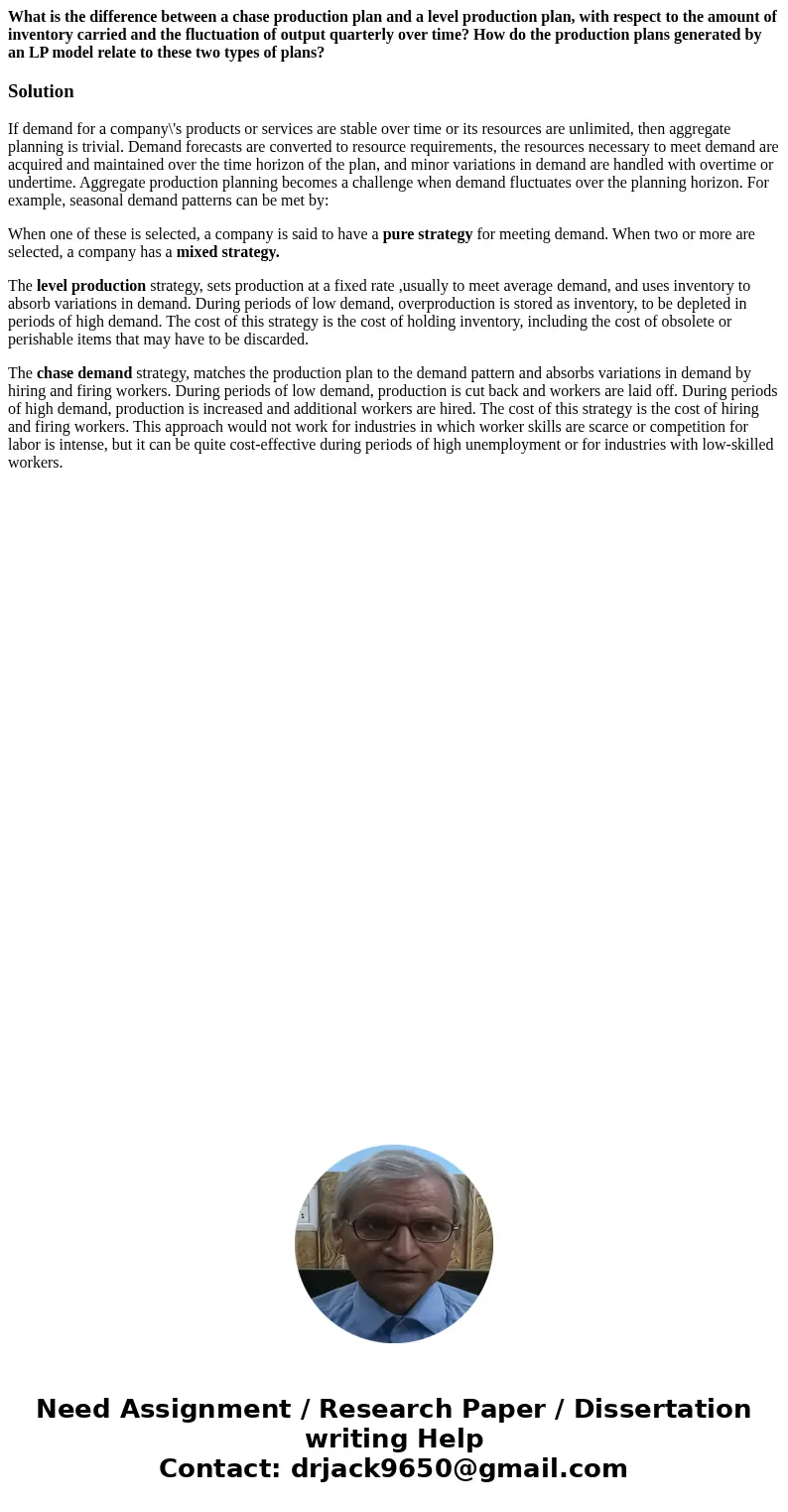What is the difference between a chase production plan and a
What is the difference between a chase production plan and a level production plan, with respect to the amount of inventory carried and the fluctuation of output quarterly over time? How do the production plans generated by an LP model relate to these two types of plans?
Solution
If demand for a company\'s products or services are stable over time or its resources are unlimited, then aggregate planning is trivial. Demand forecasts are converted to resource requirements, the resources necessary to meet demand are acquired and maintained over the time horizon of the plan, and minor variations in demand are handled with overtime or undertime. Aggregate production planning becomes a challenge when demand fluctuates over the planning horizon. For example, seasonal demand patterns can be met by:
When one of these is selected, a company is said to have a pure strategy for meeting demand. When two or more are selected, a company has a mixed strategy.
The level production strategy, sets production at a fixed rate ,usually to meet average demand, and uses inventory to absorb variations in demand. During periods of low demand, overproduction is stored as inventory, to be depleted in periods of high demand. The cost of this strategy is the cost of holding inventory, including the cost of obsolete or perishable items that may have to be discarded.
The chase demand strategy, matches the production plan to the demand pattern and absorbs variations in demand by hiring and firing workers. During periods of low demand, production is cut back and workers are laid off. During periods of high demand, production is increased and additional workers are hired. The cost of this strategy is the cost of hiring and firing workers. This approach would not work for industries in which worker skills are scarce or competition for labor is intense, but it can be quite cost-effective during periods of high unemployment or for industries with low-skilled workers.

 Homework Sourse
Homework Sourse